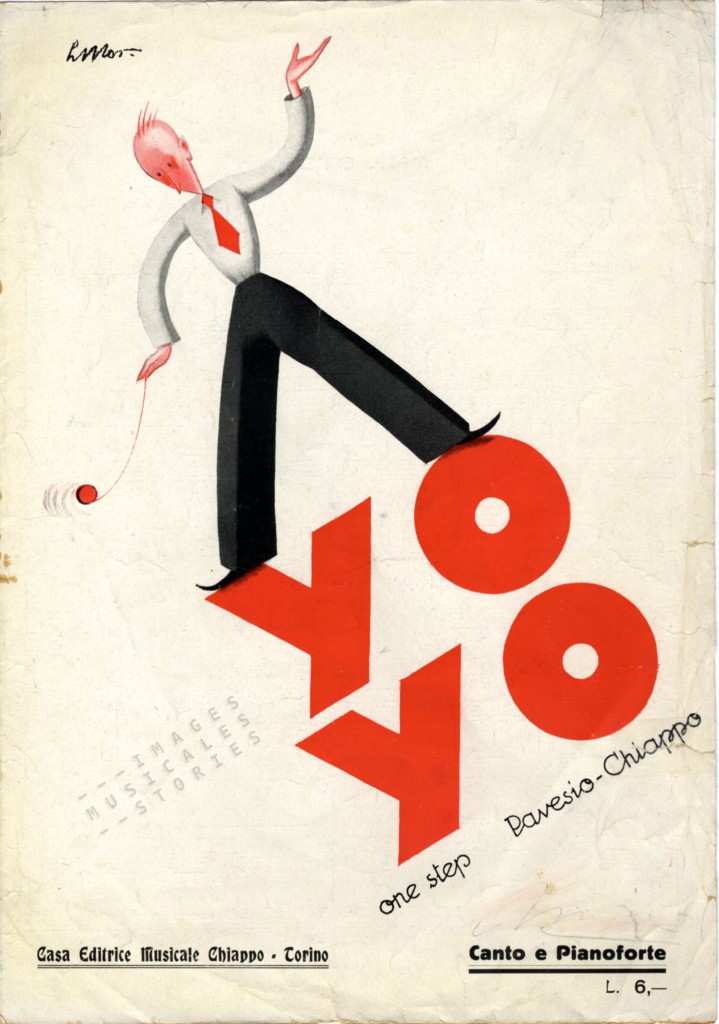
The yo-yo was invented long ago. Traces of its origins were found in old China and ancient Greece. At the end of the 1920s the little toy became all the rage, and its popularity would again flare in the Fifties. This was largely due to the marketing efforts of businessman Donald F. Duncan. In 1930 he bought a yo-yo manufacturing company from an entrepreneurial Filipino immigrant. He also trademarked the name yo-yo, which means come-come in Tagalog, a language spoken in the Philippines.
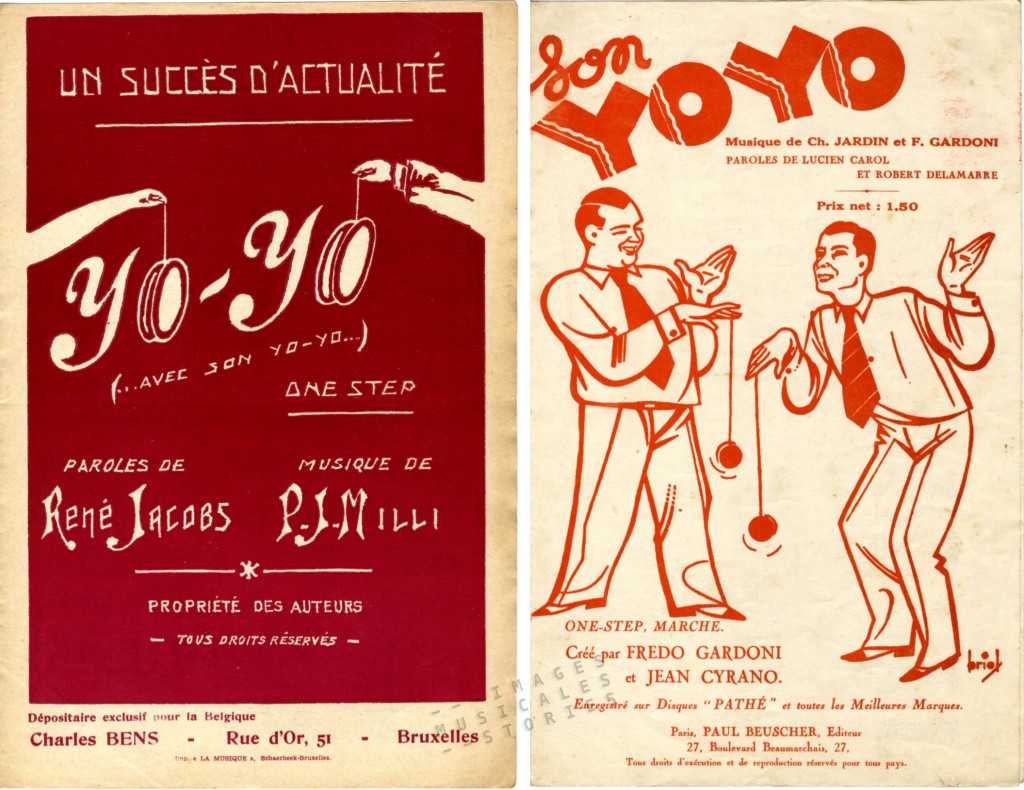
Duncan hired demonstrators, organised yo-yo contests and devised keen marketing schemes. For example, he approached newspaper magnate William Randolph (Citizen Kane) Hearst with the following deal: Hearst newspapers would advertise Duncan’s yo-yo contests and in return all competitors had to show three newspaper subscriptions as entry fee. These marketing campaigns were phenomenally successful and the sales of newspapers and yo-yo’s soared. Here is a Duncan yo-yo commercial from the fifties for a tied sale with breakfast cereals. And boy, are they fun!
For the next three decades Duncan’s company sold 85% of all yo-yo’s in the US. With a good business sense and imaginative marketing actions Donald Duncan turned his company into a $25 million toy giant.
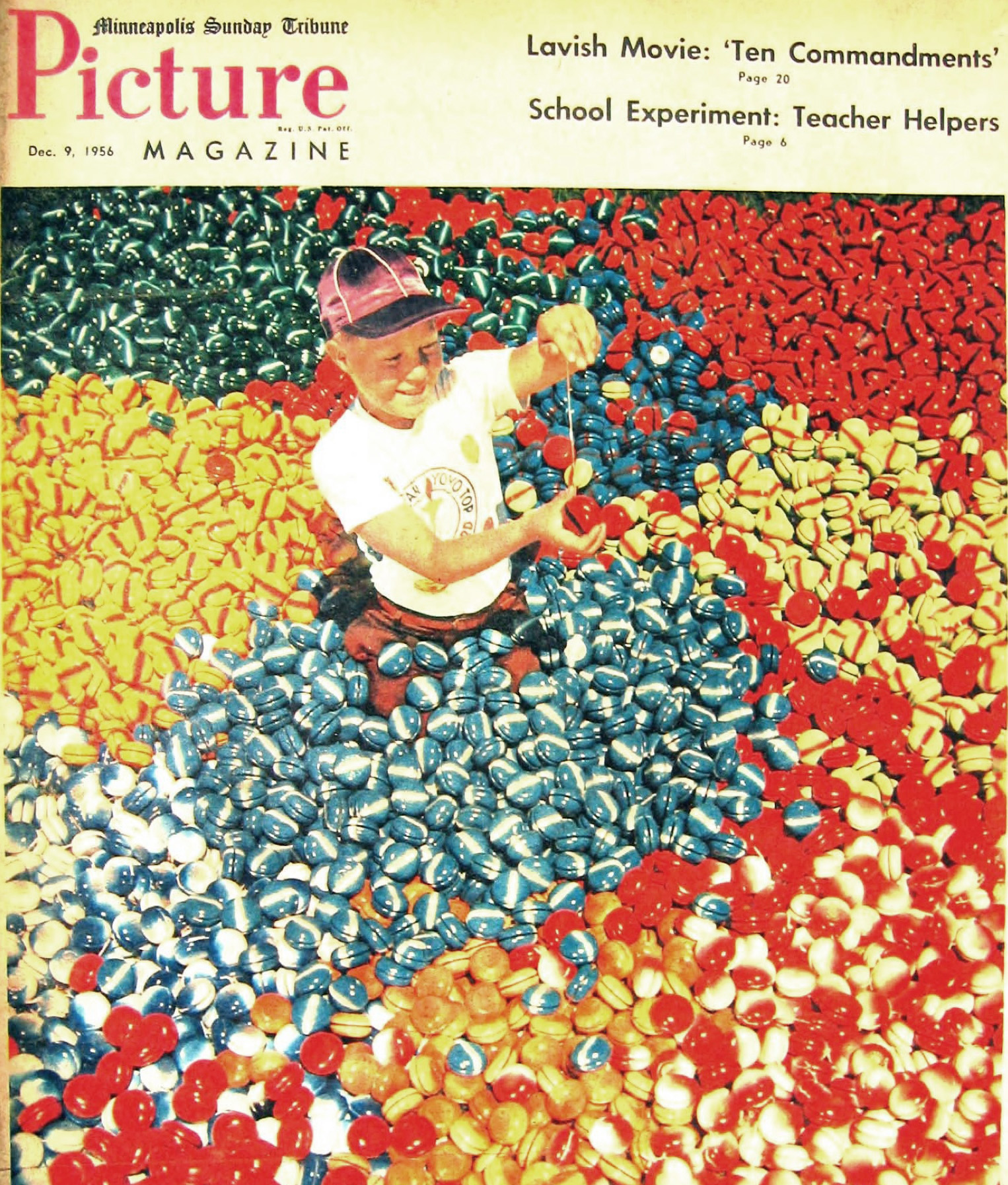
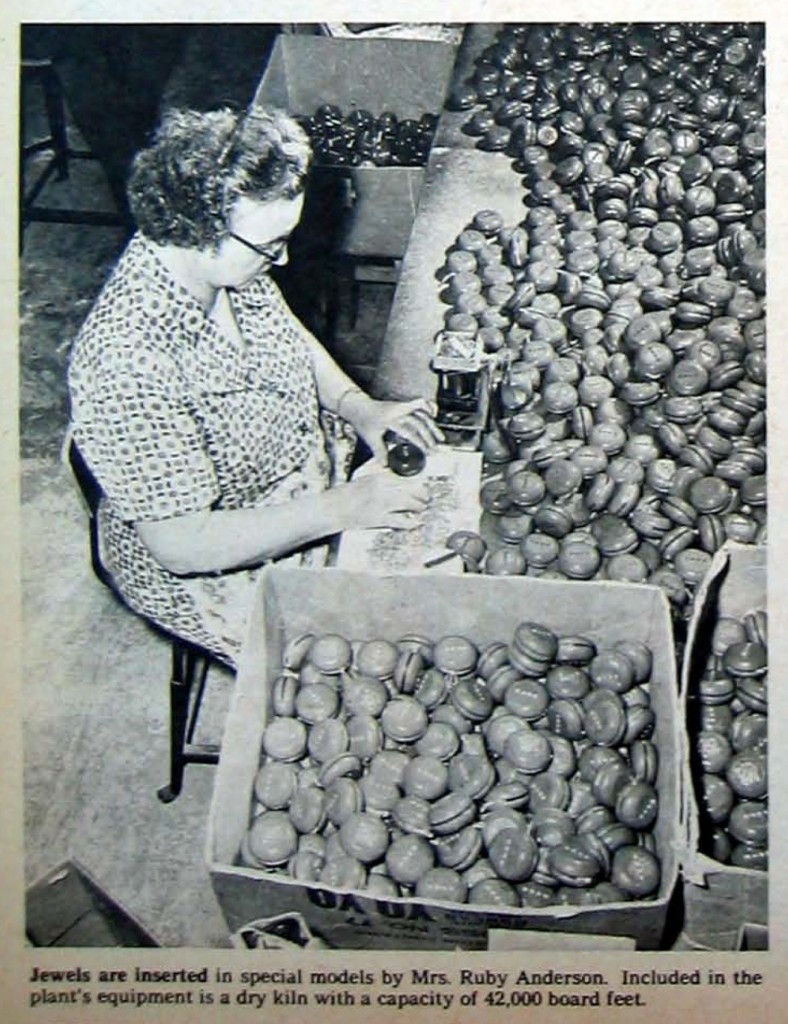
For decades the yo-yo contests kept driving the sales worldwide. Watch how in England the youth was driven into the arms of the 1950s yo-yo craze.
And if yo-yo was the rage at home and in the streets, it of course also found its way on many sheet music covers.
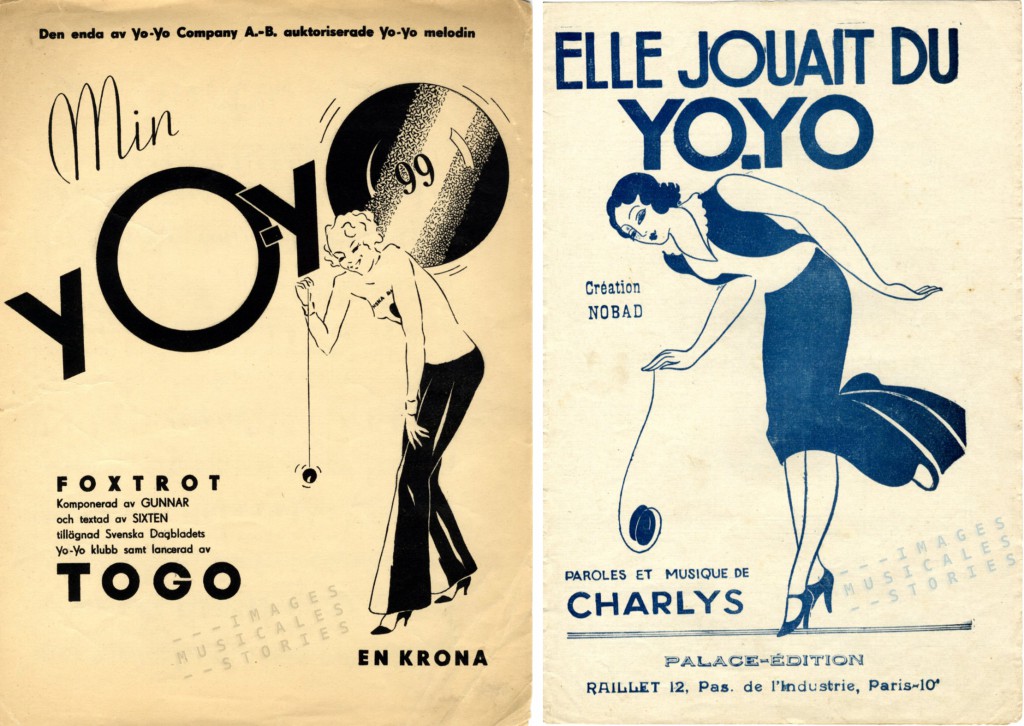
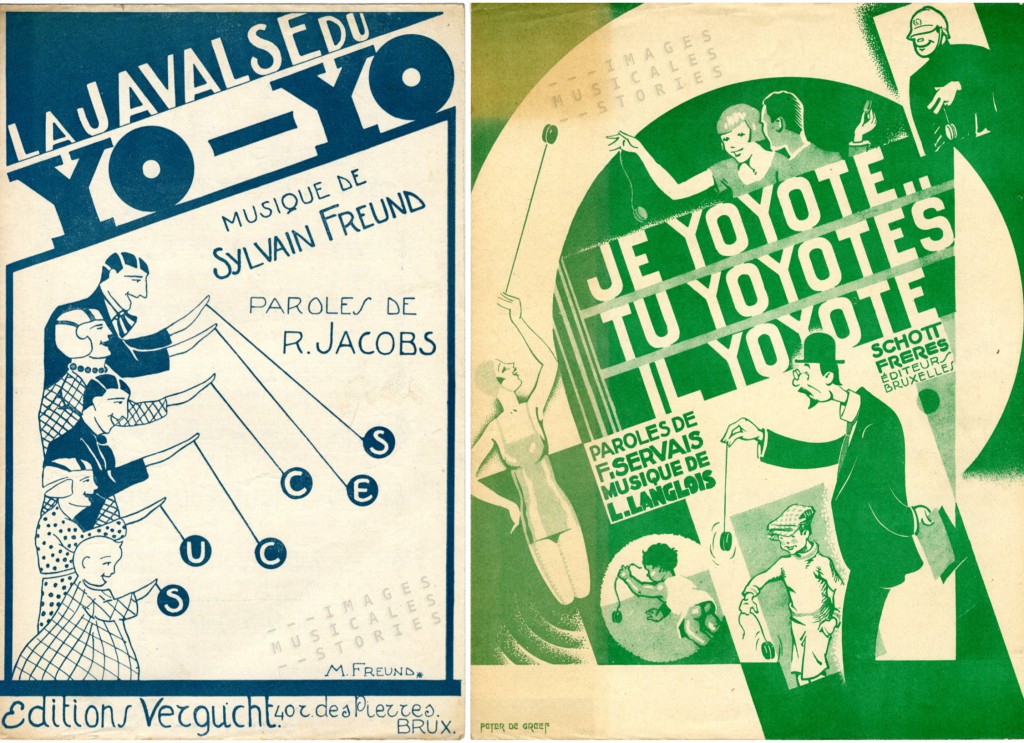
For the physics nerds amongst us, we found this clarifying piece of information on the website of an ‘extreme yoyo club’:
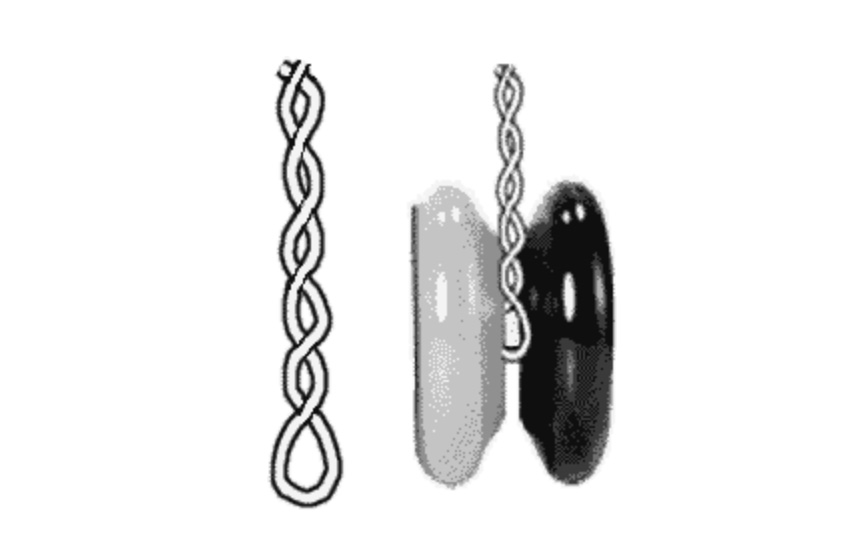 You might think that the string is tied to the yoyo. It’s not. Trust me. If you look at the string closely, you’ll notice it’s actually made out of 2 strings wound together. Twist the string counter-clockwise and you’ll see the 2 strings unwind. At the yoyo end of the string is a loop made with the winding of the string. This is where the yoyo’s axle should sit. This is why it is possible for the yoyo to spin smoothly on the string.
You might think that the string is tied to the yoyo. It’s not. Trust me. If you look at the string closely, you’ll notice it’s actually made out of 2 strings wound together. Twist the string counter-clockwise and you’ll see the 2 strings unwind. At the yoyo end of the string is a loop made with the winding of the string. This is where the yoyo’s axle should sit. This is why it is possible for the yoyo to spin smoothly on the string.
We could end this post with an account of how even today yo-yo contests are popular (and acrobatic!). But we prefer to conclude with clown Yoyo. Have you ever heard of Pierre Étaix? He’s a French film maker, clown, actor and draughtsman who worked closely for and with Jacques Tati. Étaix’s second film (1962), tells the life of clown Yoyo (yes, he is regularly seen playing with a yo-yo). We show two bizarre extracts: the animated opening credits, and a re-enactment of a 1925 charleston private show. Savour and enjoy.

Bedankt Frank, deze mooie afbeeldingen heb ik weer bij mijn bestaande afbeeldingen geplaatst